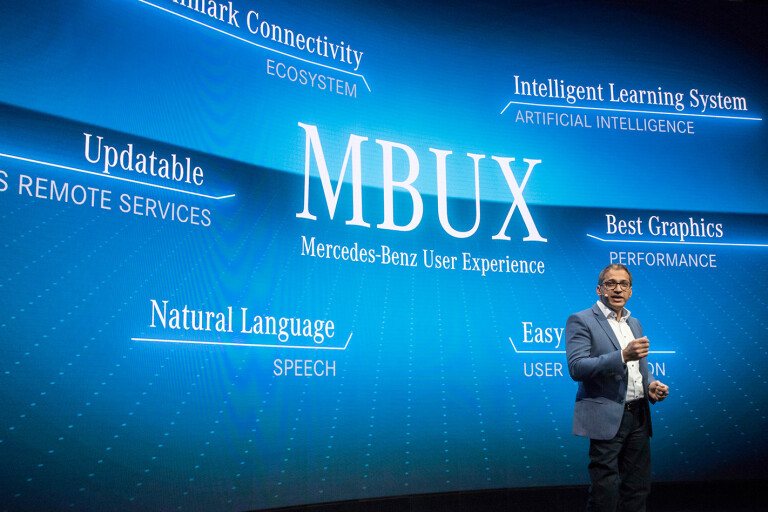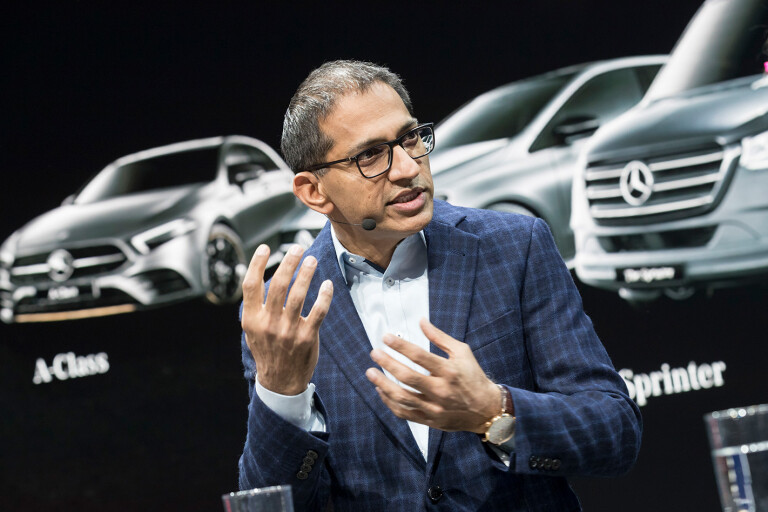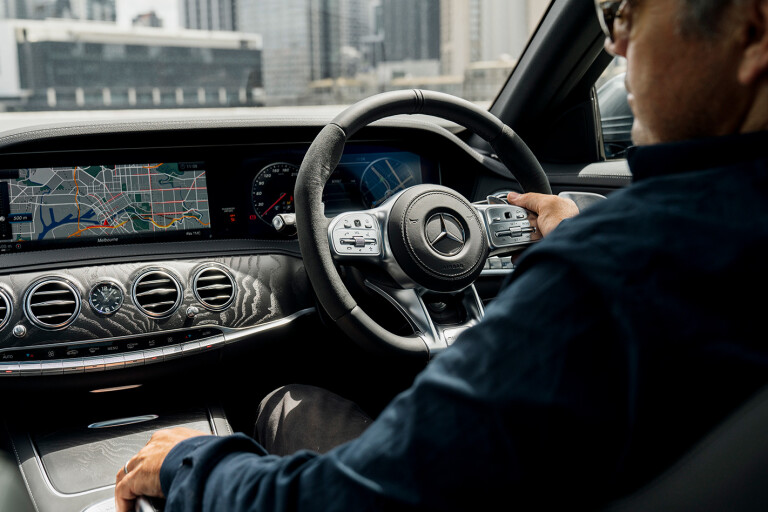
It’s difficult to reconcile the fact that when a car makes its debut on a show stand or an official website, it’s actually been in existence for five years at the very least – and perhaps even longer.
From sketch concept to viability studies, from studio comps to scale models, from hard-point sign-off to customer research, a typical vehicle has already lived many lives before it’s even born.

Add to that the frightening pace of advancements in the digital space, and it seems like a crapshoot to ensure the chosen path turns out not to be a tech dead end at the conclusion of a long – and expensive – development cycle. A Betamax, or LaserDisc, on wheels, essentially.
Imagine, then, the job of Sajjad Khan, the man responsible for adding relevant technology to Mercedes-Benz vehicles, not just for the next five years, but for the decades beyond.
The quietly spoken vice president of digital vehicle and mobility at Daimler has been in the automotive game since 2001, starting his career at DaimlerChrysler before moving to OE automaker Magna in 2007. A stint at BMW, heading up its Connected Drive division in 2011, preceded his return to the Daimler fold in 2015.
“I’m leading the organisation at the board level for Mercedes-Benz globally in the connectivity domain,” he told Wheels at the Consumer Electronics Show in Las Vegas. “We call it CASE, which are our strategic pillars of connectivity; it stands for Connected, Autonomous, Shared and Services, and Electric.”

Khan explains that his role is to ensure that Mercedes-Benz’s essence as one of the most well-regarded luxury brands on the planet is complemented by the right choice of future tech. One of the biggest achievements on his watch thus far is the rollout of the Mercedes-Benz User Experience system, or MBUX, which was launched in the A-Class and will eventually find its way into every single Merc product.
MBUX was built with the future in mind; the next C-Class, for example, will use version 7.0 of the system, and the company works closely with computer-game giant Nvidia to ensure it will grow exponentially in talent and ability.
“MBUX in general; it’s kind of massive to the industry,” says Khan. “We are developing new vehicles based on those new technologies that are as good as, or even better than, those companies which are coming from other domains – the technology giants, which have trillion-dollar values.”

However, Khan is keen to point out that much of the technology produced for MBUX was sourced and produced from within the company. “Not only from the concept perspective, even from the software-programming perspective and the framework perspective, we did in-house,” he says.
“Cloud intelligence, speech… we use the base systems from key partners, but the majority of the work is done in-house.”
Think of MBUX as a powerful computer sitting behind your dashboard, and you’re on the right track. Its ability to learn and adapt to its new owner is already well known, but Khan says there’s a lot more potential already built into the system, and it won’t be limited by chipsets and screens.
“The game-changing thing is how you connect everything together, so that from the customer perspective, it’s seamless; they don’t have a feeling of ‘am I autonomous or am I in the connectivity domain at the moment, or am I driving electric?’” he says, leaning forward.
“If you’re driving electric and you have a range, what does it mean? Does it make sense to drive autonomous, or non-autonomous? And if you’re driving autonomous, is it beneficial to say, select the air-conditioning system via the MBUX, when you can use your AI algorithm to decide: ‘the customer has given a destination, which needs another five kilometres of range, so I should switch off this and that,’ then the customer could reach the destination,” he says.

Mercedes-Benz has already debuted some of the best-performing driver-aid products with its Driver Assistance Package in cars like the E-Class and S-Class, and Khan says the company is in a good place when it comes to rolling out the next levels of vehicle autonomy.
“Our attended-driving, or driver-assistant, philosophy is to keep it simple,” he says. “We are incrementally developing the systems, from [assistant levels] one to three. In parallel, we are also following the path to produce complete level four and five (complete automation, hands-off, eyes-off). So we are not waiting.”
The road to a driverless future isn’t quite mapped out yet, though, according to Khan, who observes that the autonomy rollout will depend largely on factors that can’t be controlled.
“I think the major thing is looking at different markets around the world, and the infrastructure available in those markets … how can you cover all the use-case issues?” he asks.
“We could look at level four or five for a specific town or region or district, because you know that you have sorted out the whole-use cases there.
“Maybe when you try to take the same thing to Venezuela, or to Mexico, or somewhere else, it may not work, because of a lack of infrastructure.”
The digital revolution is just warming up, and it’s obvious that Mercedes-Benz – thanks to people like Sajjad Khan – is right at the vanguard of a connected future.

COMMENTS